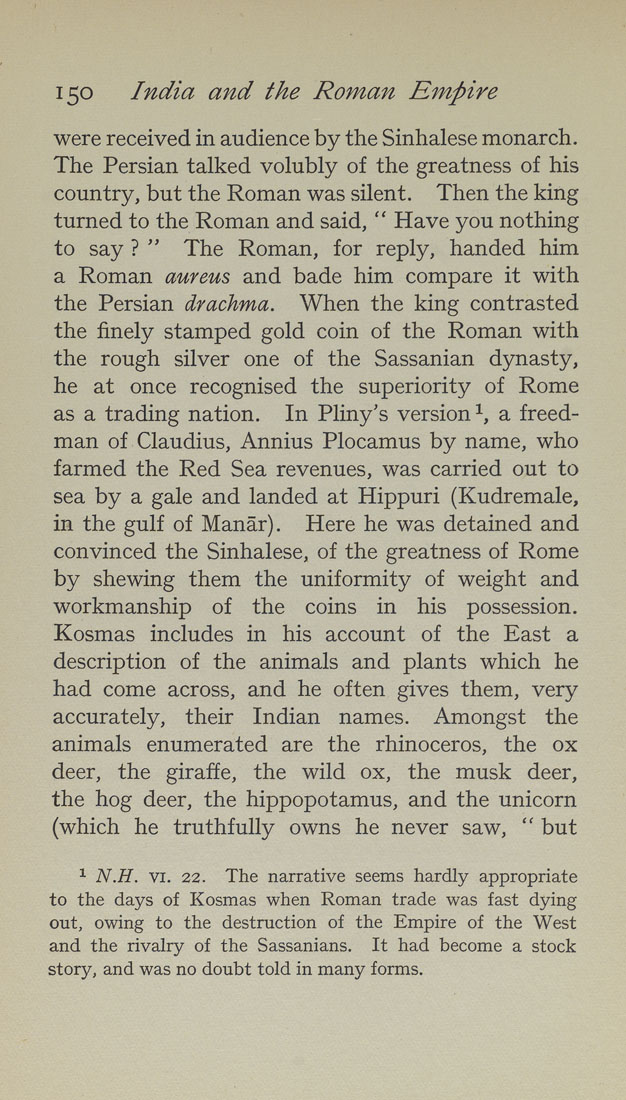150 India and the Roman Empire
were received in audience by the Sinhalese monarch.
The Persian talked volubly of the greatness of his
country, but the Roman was silent. Then the king
turned to the Roman and said, " Have you nothing
to say ? " The Roman, for reply, handed him
a Roman aureus and bade him compare it with
the Persian drachma. When the king contrasted
the finely stamped gold coin of the Roman with
the rough silver one of the Sassanian dynasty,
he at once recognised the superiority of Rome
as a trading nation. In Pliny's version 1, a freed¬
man of Claudius, Annius Plocamus by name, who
farmed the Red Sea revenues, was carried out to
sea by a gale and landed at Hippuri (Kudremale,
in the gulf of Manar). Here he was detained and
convinced the Sinhalese, of the greatness of Rome
by shewing them the uniformity of weight and
workmanship of the coins in his possession.
Kosmas includes in his account of the East a
description of the animals and plants which he
had come across, and he often gives them, very
accurately, their Indian names. Amongst the
animals enumerated are the rhinoceros, the ox
deer, the giraffe, the wild ox, the musk deer,
the hog deer, the hippopotamus, and the unicorn
(which he truthfully owns he never saw, " but
^ N.H. VI. 22. The narrative seems hardly appropriate
to the days of Kosmas when Roman trade was fast dying
out, owing to the destruction of the Empire of the West
and the rivalry of the Sassanians. It had become a stock
story, and was no doubt told in many forms.
|








